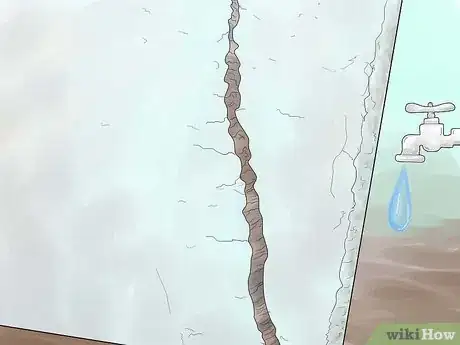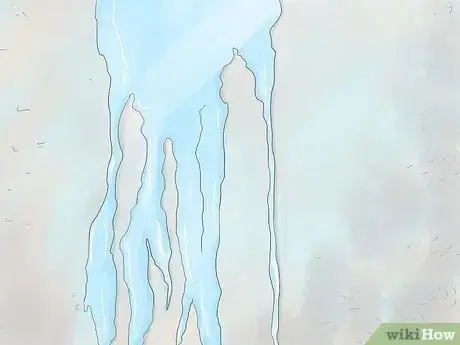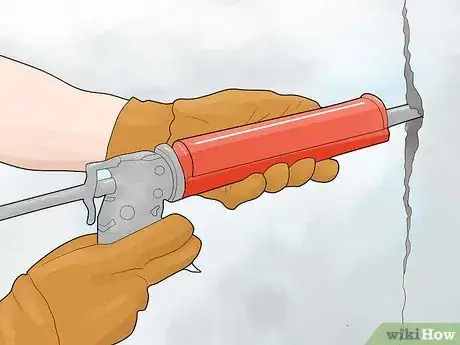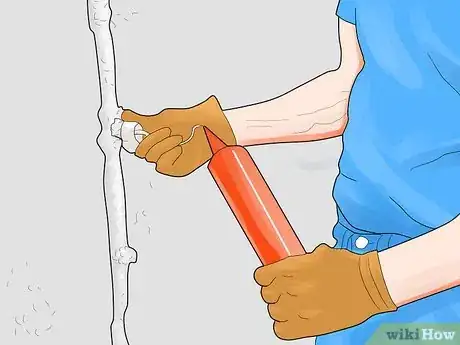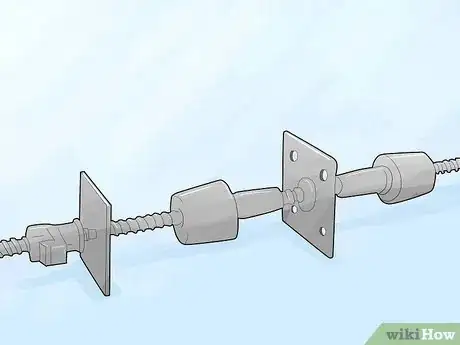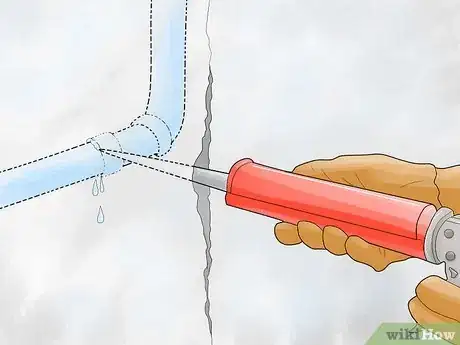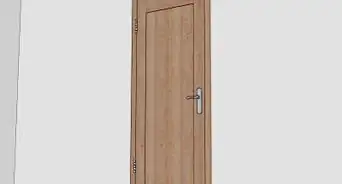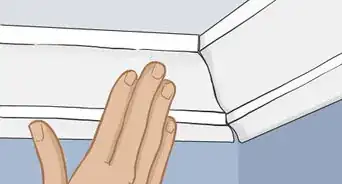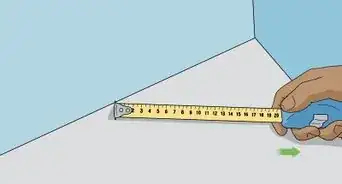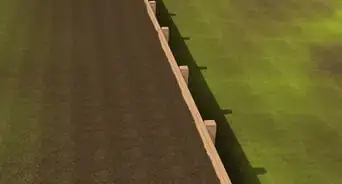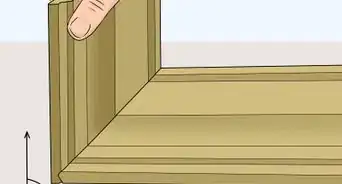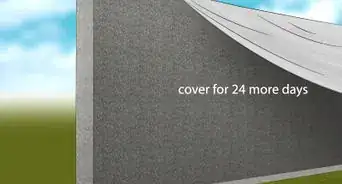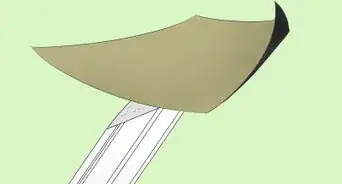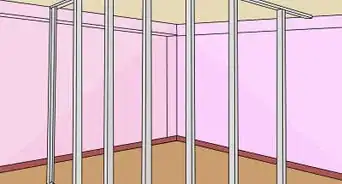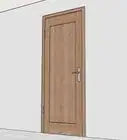X
wikiHow is a “wiki,” similar to Wikipedia, which means that many of our articles are co-written by multiple authors. To create this article, 10 people, some anonymous, worked to edit and improve it over time.
This article has been viewed 186,786 times.
Learn more...
What do you do if you need to repair a poured concrete wall? This article walks you through repairing it, including wall cracks, cold joints, snap ties, etc.
Steps
-
1Be aware of the problems that can be caused by water intrusion that occurs in poured concrete foundations. The causes include:
- Improperly sealed snap ties.
- Cold joints (where new concrete meets existing concrete i.e. in an addition of a home).
- Water, well, sewer, and electrical conduit pipe penetrations.
- Foundation wall cracks.
- On rare occasions, water can come through a concrete wall that hasn't been properly vibrated thus creating a honeycomb area in the concrete.
-
2Repair wall cracks. The only way to repair foundation wall cracks successfully is by the injection process. Injecting a typical wall crack with an epoxy or urethane resin is done under pressure pushing the material from the inside all the way to the outside.[1]
- The injection process fills the crack from top to bottom, from inside to outside. This repairs and stops the water intrusion.
- The old process of v-ing out a crack from the inside or outside and patching it with hydraulic cement or water plug will not work.
- Foundations are prone to movement and because the hydraulic cement or water plug doesn't have the strength to withstand future movement it will crack and cause the foundation wall crack to fail.
- Epoxy injections are considered structural repairs and will weld the foundation back together when done properly. Urethane injections will stop water but are not considered structural fixes. It is however flexible and can withstand movement in the foundation. Newer cracks on homes that have been allowed to settle for at least 1-2 yrs are good candidates for epoxy injection. Because epoxy is like superglue gluing or welding the foundation together it needs a fairly clean crack in order to be successful.[2]
- For older homes that have had cracks previously repaired and have dirt and silt built up inside them, a urethane injection will be more successful in stopping water.
Advertisement -
3Repair cold joints. Because no chemical bond is created when new concrete is poured against old concrete, cold joints, such as when you put an addition on your home, will often leak water. After the addition has been able to settle for a period of 1-2 yrs, the proper repair to stop water coming through a cold joint would be a urethane injection.
-
4Repair snap ties and tie rods. Metal snap ties and tie rods are used to hold the forms of a foundation in place while it is being poured. After the forms are removed, the snap ties on the outside are typically coated with a flexible polymer or hydraulic cement before a damp proof or water proofing membrane is applied to the foundation. These snap ties can leak over time if the prep work is not done properly.
- Inject a snap tie under pressure from the inside with a urethane resin will stop them from leaking.
-
5Repair pipe penetrations. During the construction of a home, holes in the foundations are cored to allow for water, well, sewer and electrical conduits to penetrate through the foundation. For example, a typical sewer line is 4 inches (10.2 cm) around. The hole cord maybe up to 5 inches (12.7 cm) or more thus leaving a void between the outside of the sewer pipe and the concrete. Prior to backfilling the foundation on the outside, these voids are typically filled with hydraulic cement. Improper preparation around pipe penetration can cause water intrusion.
- To stop a pipe penetration from leaking, an injection of a urethane resin that expands up to 20x its volume thus filling the void from inside to outside should be used. Injecting around a pipe penetration from the inside will stop water seepage.
-
6Repair honeycomb areas. A honeycomb area in a foundation is the result of improper vibration or settling of the concrete thus leaving voids and pockets in the wall. Injecting a urethane resin under pressure will seal and fill these voids and pockets thus stopping the leak.[3]
Advertisement
Community Q&A
-
QuestionThere is a 1-inch diameter PVC pipe inside a 200 mm concrete wall. Do I fill the grout manually inside?
 Community AnswerYes. Use hydraulic cement if possible - but even caulk should be fine.
Community AnswerYes. Use hydraulic cement if possible - but even caulk should be fine. -
QuestionI have a 6" x 6" hole in my poured concrete wall right at the I-beam. I have patched it with two different patching products that have not worked! If I formed up the hole and poured a regular concrete mix into it would that work?
 Community AnswerYes, but it will be better if you add gravel. Beware of leaks due to gravity. Install rebar or something like that in the mix before it sets. The mix itself is not strong enough to bear its own weight without interior support. Press some strong mesh into the exterior while it is still wet to the touch. Seal it properly. Be sure to take weather and humidity into consideration when choosing your day to begin. Start on a mild but warm day and pray you don't get a serious rain until it's at least set up.
Community AnswerYes, but it will be better if you add gravel. Beware of leaks due to gravity. Install rebar or something like that in the mix before it sets. The mix itself is not strong enough to bear its own weight without interior support. Press some strong mesh into the exterior while it is still wet to the touch. Seal it properly. Be sure to take weather and humidity into consideration when choosing your day to begin. Start on a mild but warm day and pray you don't get a serious rain until it's at least set up. -
QuestionWhat product do I need to produce the thin white covering used to repair basement cracks?
 Community AnswerSpackling or caulk. Wall repair kits are also sold at most department stores.
Community AnswerSpackling or caulk. Wall repair kits are also sold at most department stores.
Advertisement
References
About This Article
Advertisement
